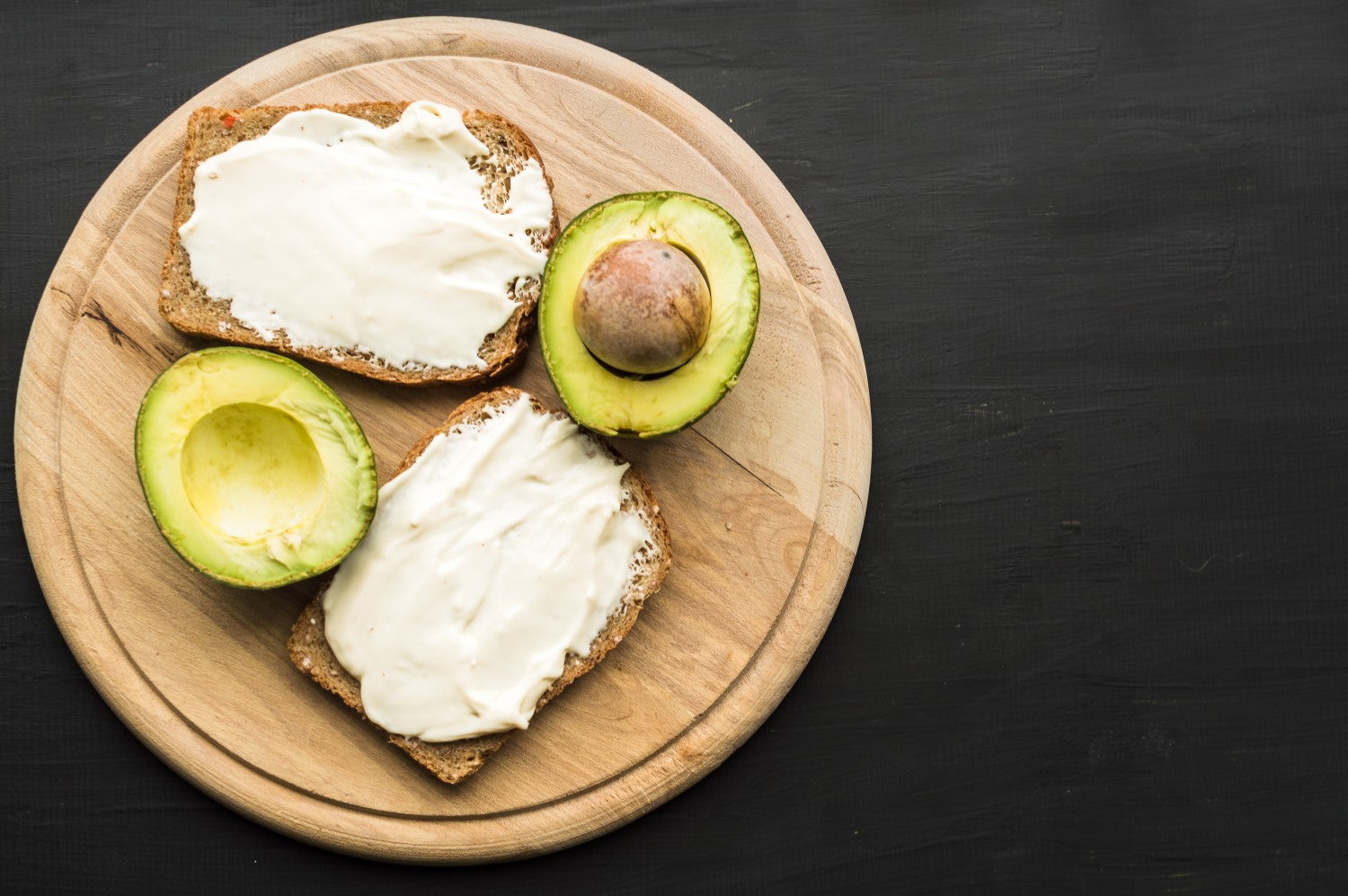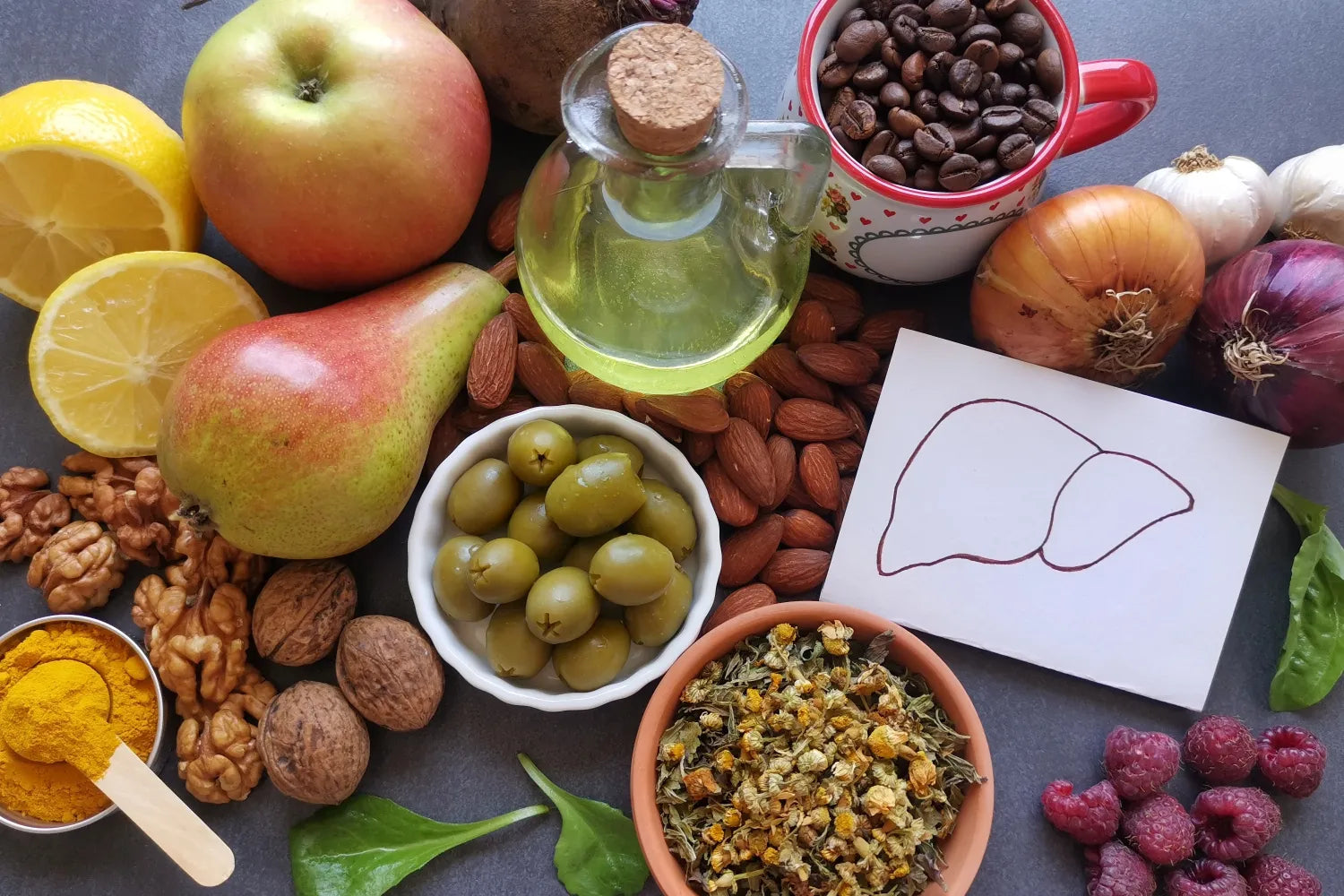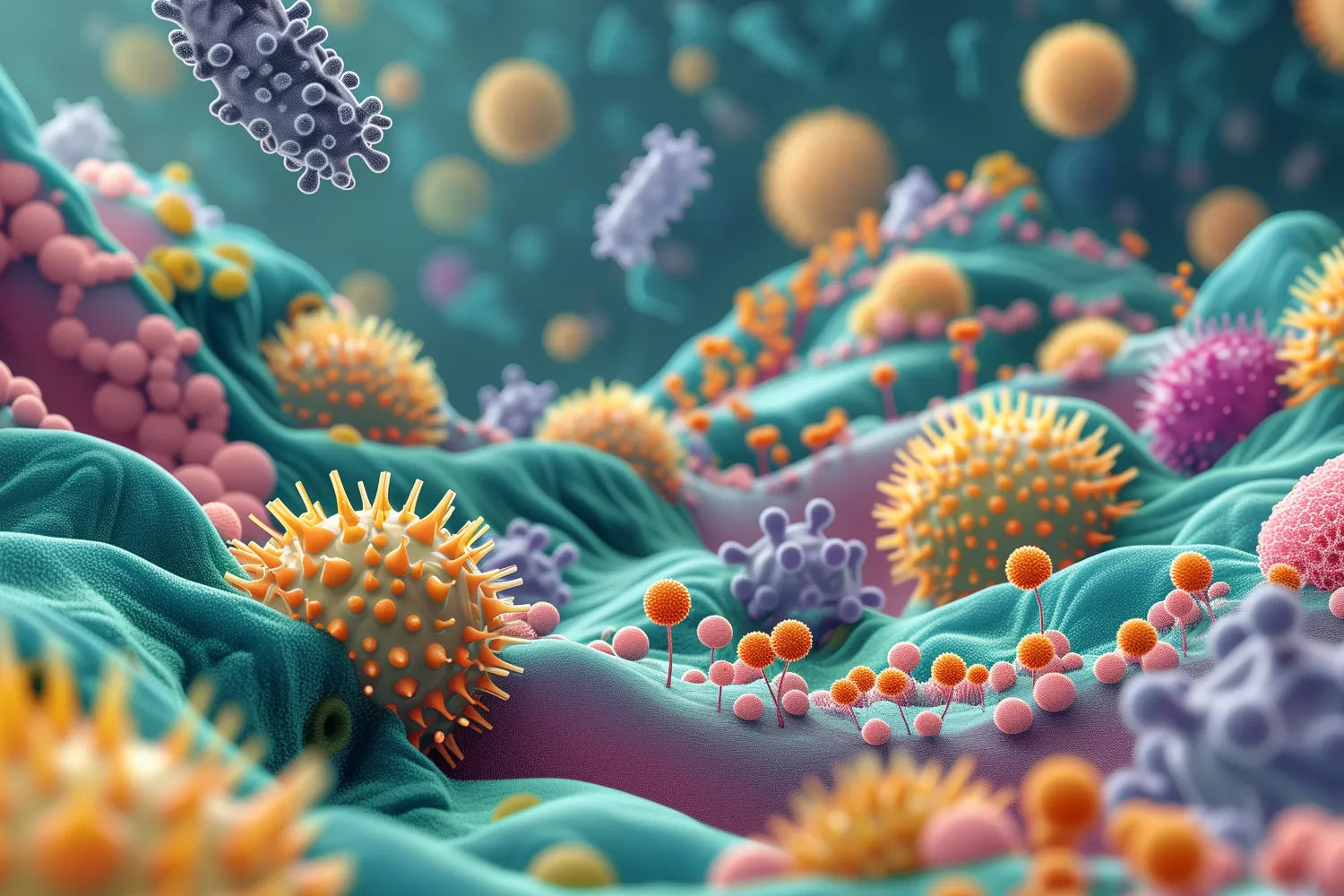
Dr. Eric Venn-Watson’s Highlights
- Some of the best butter substitutes include pressed avocado oil spread and coconut butter for spreading, and applesauce and avocado for baking.
- However, butter includes some healthy fats that are essential for your diet, like odd-chain saturated fatty acids.
- If you don’t want to eat butter but are still looking to get those healthy fats, consider taking fatty15, a supplement that provides C15:0 to help with cellular health.
Children of the 1960s remember butter fondly -- it was in practically every prepared dish we ate. Butter was as common on the table at mealtime as salt and pepper, and no one thought twice about adding a pat to their plates.
Things changed in the late 1970s when nutritionists and physicians began to search for ways to reduce the rapidly growing number of men in America who were dying of cardiovascular disease. Americans were worried, science was a bit rushed, and thus, health guidelines were developed that advised us to stay away from dietary fat — especially all saturated fats — because these fats were thought to be the culprits behind our health problems.
This change meant the end of butter for many of us, but not the end of our desire for that sweet, creamy spread that complements so many foods so perfectly. We quickly developed butter alternatives, and vegetable oil-based margarine was the most popular.
Margarine is somewhat of a science project. Whereas the ingredient label on a package of butter is generally one or two ingredients (pasteurized cream and salt), margarine contains at least ten ingredients, if not more. Margarine is essentially vegetable oil, artificial flavors, colors, and preservatives. Not quite our ideal picture of healthful food. And if you think you’re getting a pass because you use a dairy-free, plant-based alternative, think again. Vegan butter is also a mixture of ingredients that usually include some type of oil (like olive oil or coconut oil) with butter-like flavorings and food colorings.
If you’re looking for a good butter alternative, you should take a moment to know that a growing body of scientific research supports that not all saturated fats are bad for us.†
In fact, one particular odd-chain saturated fatty acid, named C15:0 (or pentadecanoic acid), present in trace levels in butter, has actually been associated with positive health benefits. Science supports that C15:0 is the first essential fatty acid to be discovered in 90 years, serving to nourish our cells and give them a fighting chance to stay healthy and resilient instead of breaking down and becoming fragile as we age.*†
You likely aren’t getting much C15:0 in your diet, because this good saturated fatty acid is found in whole milk products, like butter. The problem is, by consuming full-fat butter, you are also getting much higher doses of “bad” even-chain saturated fats (like C16:0), which are pro-inflammatory and may increase your risk of chronic diseases.
A Little Information About Fat and Cholesterol
Perhaps our dietary guidelines changed due to the link between unhealthy cholesterol levels and heart disease. It was hypothesized (back in the 1970s) that our food's fat content was causing our cholesterol levels to skyrocket.
There are two types of cholesterol: low-density lipoprotein (LDL) cholesterol and high-density lipoprotein (HDL) cholesterol. LDL is often considered your “bad” cholesterol number, while HDL is considered “good.”
Our cholesterol reading doesn’t spike solely because we eat fat-rich foods. It happens because of a myriad of dietary and lifestyle habits that link together.
Maintaining a heart-healthy diet doesn’t mean avoiding all fats. Polyunsaturated fats like omega-3, especially EPA, for instance, are considered good for heart health. Trans fats, or fats that were once liquid and were made into solids through processing, are bad for heart health.
So what’s the solution? You can look for a healthier butter alternative other than margarine, and you can take a pure, once-a-day C15:0 supplement to keep your cells healthy and thriving.*†
The Best Butter Substitutes
When considering what to use as a butter substitute you essentially have two categories: butter used as spread, and butter substitutes used for baking.
Here are some top choices for each category.
Butter for Spreading
Unlike butter used for cooking, butter that is used for spreading has to have great flavor, and be pliable enough to easily spread on your food. This type of butter may also be the kind you’ll add to cooked vegetables and to your saute pan.-
Pressed avocado oil spread. For spreadability, taste, and nutrition, you won’t find a much better option than an avocado oil spread. Made with just a few ingredients (mostly avocado oil and salt), you won’t have to wonder what’s in your food. Avocado oil spread has a pleasant taste that is mild and flavorful, and contains ten grams of fats per serving, most in the form of omega-9 monounsaturated fat. Added bonus, you can also cook with it. It makes a great spread for sauteing and gives off a very light flavor that you might find you prefer to traditional butter.
-
Coconut butter. Coconut butter or “coconut manna” is a coconut spread made from pure coconut, nothing else. While the taste may not closely resemble that of original cow’s milk butter, users generally enjoy the taste and appreciate the lack of additional ingredients and preservatives. Coconut butter contains a healthy dose of fat and fiber, which can give it a good nutrition profile for a spread. Unlike regular butter, coconut butter melts extremely quickly, rendering it close to coconut oil, even at slightly warmer temperatures than room temperature.
-
Ghee. Okay, technically, it’s still butter, but it’s butter that has been heated to remove excess water, giving it a richer flavor and higher smoke point. Additionally, ghee doesn’t contain lactose, which makes it a great alternative for people with lactose intolerance or sensitivity. Because ghee is still technically butter, it has the same nutrition profile as butter, which means it will contain both odd-chain and even-chain saturated fats.
-
Peanut Butter. Hear us out. It’s not a substitute for regular butter in some scenarios, but it can be a replacement on toast or a bagel. If you’re simply looking for something spreadable that enhances the flavor of your whole wheat bread product, peanut butter, almond butter, or any nut butter is a good option. In addition, you’ll pump up your nutrition with a little healthy fat and protein. Not to mention, you’ll avoid dairy butter ingredients (like casein and lactose) completely.
-
Cream Cheese. Cream cheese doesn’t taste like peanut butter, but it gives you an alternative to spread on toast, crackers, and bagels. Remember that cream cheese contains milk solids, making it a no-go for people with a dairy allergy.
Butter Substitutes for Baking
Finding a butter substitute for baking is a bit easier than deciding on a butter substitute based on butter-like flavor. Used in baking, butter is used as a leavening agent, an ingredient to add moisture, and to add flavor. As such, it’s very possible to use another source that isn’t even remotely related to butter as a substitute. It’s worth noting that if you’re baking something like a butter cake or a rich buttercream frosting, you’re going to have a hard time finding a worthy substitute.
-
Applesauce. Applesauce is frequently used in baked goods such as cookies and cakes as a butter alternative. Using unsweetened applesauce can provide moisture to a baked good and aerate the mix or dough, allowing it to rise in the oven. Additionally, unsweetened applesauce has a mildly sweet taste, so it may even be possible to reduce the sugar in your recipe, allowing the natural sweetness of the applesauce to flavor the recipe. You’ll likely use a 1:1 ratio for substitution.
-
Mashed banana. Mashed banana is a popular butter substitute that adds nutrients to any baked good, helps reduce total caloric content, and produces the same moistening and leavening effect as butter. If you opt to use mashed banana in a baked good, you should know the taste will definitely reflect the change. It is virtually impossible to disguise banana flavor, so whatever you’re baking will definitely have a “banana” essence. Luckily, bananas could be considered a complementary flavor in a lot of baked recipes like cakes, pies, and cookies!
-
Avocado. We weren’t sure about avocado’s ability to fill in for butter in a baked good until it started showing up in some of the most delicious brownie recipes we had tried. Mashed avocado has a flavor that goes almost completely undetected when added to a baked good, making it a great option for recipes where integrity of flavor is important. Avocado is green. Anything you bake with it will likely be green unless you are baking with dark chocolate or cocoa. Avocado adds healthy fat to your baked goods and keeps them moist. In addition, avocado contains about 250 milligrams of potassium, an essential nutrient that can help support heart health. You can opt for mashed avocado or choose sticks of avocado “buttery spread” at the grocery store. Both will work well for baking recipes.
-
Canola Oil. If you’ve got a recipe you need to make ASAP and have no other substitutes available, you can use canola oil in lieu of butter. The ratio for substitution is usually about ¾ cup of canola oil per cup of butter. Keep in mind that canola oil contains omega-6 polyunsaturated fatty acids. The average diet is not deficient in omega-6, and too much of it can present health problems. In addition, canola oil comes from soybeans. If you prefer to eliminate soy from your diet, this wouldn’t be a healthy butter substitute for you.
-
Greek Yogurt. This yogurt is creamy and thick and will render the same consistency in your final baked dish as butter. Generally, you’ll substitute at a ratio of about ½ cup of plain, unsweetened Greek yogurt for every cup of butter your recipe requires. You’ll also get the added benefit of calcium in your recipe, but you may need to adjust your salt content if the recipe originally called for salted butter. Most Greek yogurt does not contain salt.
-
Pumpkin puree. This one is much like a mashed banana. It can be substituted in most recipes, but the flavor of pumpkin is undeniable. Making a dish for fall? Pumpkin puree is the perfect substitute. Making a white wedding cake? You might want to reconsider. To figure out the substitution, multiply the amount of butter in the recipe by ¾. For instance, if the recipe calls for one cup of butter, you’d add ¾ cup of pumpkin puree.
Another important consideration is the caloric content of each substitute. If you are watching your caloric intake, be aware that some butter substitutes have fewer calories than regular butter, but some may contain more.
What About the Healthy Fat in Butter?
As previously mentioned, if you want to get the benefits of the healthy, C15:0 odd-chain saturated fat contained in full-fat butter without eating butter itself, you’ll likely want to use a supplement.
Fatty15 is the first and only pure powder and vegan-friendly C15:0 supplement available to give your cells all the great benefits of C15:0 with none of the added even-chain fats found in whole-fat dairy products.†
How does it work?
As we age, our cells begin to break down. They get flimsy, swollen, and unable to divide and function like they once could. They begin to lose their capability, and become weak and fragile.
When our cells become weak and fragile, we become weak and fragile. Fatty15 can help.*
Elevate your cells. Elevate your self.
Buy NowFatty15 goes into your cells to:*†
-
Protect cell membranes. C15:0 is a sturdy fat that supports your cell’s structure by strengthening your cells and acting as a shield of armor for your cell membranes.
-
Balance your immunity.Fatty15 helps calm and lower pro-inflammatory cytokines, which are associated with age-related breakdown.
-
Promote healthy metabolism.Fatty15 activates AMPK, PPARɑ and PPARẟ receptors. These receptors modulate metabolic, immune, heart, and liver function. By activating these receptors, fatty15 helps keep our metabolism balanced.
-
Support red blood cell health. Fatty15 bolsters red blood cell health, promoting their proper function and purpose, so they can carry oxygen to every part of your body and keep the rest of your body functioning as it should, too.
-
Increase mitochondrial function. As we get older, the mitochondria in our cells that act as their batteries begin to decline. With slower mitochondrial function, we experience a slowdown throughout our entire bodies. C15:0 helps boost mitochondrial function by up to 45%, so your cells can stay supercharged, and so can you.
- Increases ATP levels. ATP is the energy currency in your body. It’s a molecule required for fueling energy creation on all levels, starting in your cells. With age, ATP levels naturally begin to decline. In one study, C15:0 increased ATP levels in the cells by 350%. That equates to more cellular power, which translates to a more energized you.
By performing these functions and improving your cellular health, fatty15helps reverse cellular aging.*†In addition to taking care of your body by getting plenty of exercise, eating healthfully, and avoiding behaviors like smoking or exposure to toxins, adding fatty15 to your health-stack is one of the easiest things you can do to improve your health. Taking fatty15 each day can help you age on your own terms, which can keep you doing the things you love, longer.
So as you spread that avocado on your multigrain toast, don’t forget your daily dose of fatty15 to give your cellular health the support it deserves so it can keep supporting you.
Sources:
https://www.ncbi.nlm.nih.gov/books/NBK469839/
https://www.seraphinatherapeutics.com/scientific_articles.html
https://www.ncbi.nlm.nih.gov/pmc/articles/PMC6600360/
https://www.health.harvard.edu/staying-healthy/butter-vs-margarine

Eric Venn-Watson M.D.
CEO, Co-Founder
Senior Scientist, Co-Founder
Eric is a physician, U.S. Navy veteran, and Co-founder and COO of Seraphina Therapeutics. Eric served over 25 years as a Navy and Marine Corps physician, working with the special forces community to improve their health and fitness. Seraphina Therapeutics is a health and wellness company dedicated to advancing global health through the discovery of essential fatty acids and micronutrient therapeutics.
You May Also Like...
10 Foods Good for Your Liver: The Ultimate Guide
Your liver does a lot for you. If it had a voice of its own, it might ask you to eat more veggies and cut back on your Old Fashioneds. Unfortunately, the liver doesn’t receive a lot of attention until...
How To Improve Your Gut Microbiome: 6 Tips
Interested in how to improve your gut microbiome? We’ve got six tips to help your gut thrive and improve your overall digestion.


